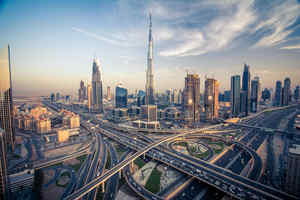Dubai: 100k + rooms and counting
1 August 2018

Over the years, Dubai has positioned itself as the Middle East’s main transport and business hub, and the market is continuously working on curating a complete, mature hospitality offering.
According to AM:PM’s database, there are currently 102,660 rooms across 506 hotels in Dubai. The market’s hotel landscape continues to expand and evolve just as the city does, with a major ramp-up in hotel supply in preparation for the 2020 Expo and beyond.
AM:PM shows that there are currently 53,352 rooms in the pipeline. While projects can be put on hold or canceled for a variety of reasons, there are nearly 30,000 rooms currently under construction, meaning they are expected to come online at some point in the near future.
Performance struggles, but demand continues to rise
In July 2018, Dubai recorded a 9.5% drop in RevPAR compared with the same month last year. While occupancy is typically the metric most impacted by supply growth, occupancy actually rose 0.5% compared with July 2017 as demand (rooms sold) increased across all hotel classes. ADR, however, declined 9.7% compared with July 2017, hitting an actual level of AED424 - Dubai’s lowest actual ADR for any month since August 2004.
Supply growth is not a new concern for the Dubai hotel market. While demand outpaced supply in July, occupancy declined 3.2% in Q2 2018. But July performance shows that the market’s rate of demand growth is still capable of outpacing its rate of supply growth. While ADR decline is a cause for concern, it is important to look at the bigger picture to understand why rates have declined over time.
A bigger, broader selection
When a market’s hotel supply expands considerably over a relatively short period of time, ADR can change dramatically due to the increased competition. In Dubai’s case, however, this decline in ADR is not simply an indicator that existing hotels are constantly slashing rates to bring in more guests than their incoming competitors. While pricing strategies have likely adjusted to help keep driving demand growth, there is another factor to consider: the type of new hotels being built.
Dubai’s hotel supply was previously dominated by properties in the upper-tier classes. Over the last few years, there has been a shift to more mid-tier properties coming online, charging lower rates. Although the upper-tier classes are still growing, this change in the market landscape brings the overall market’s average rates down. However, along with continued developments in tourist attractions, this shift also helps demand continue growing as there are more affordable options for travelers across different budgets.
Looking ahead
There is still a high amount of investment interest in Dubai, which does not appear to be dying down any time soon judging by the pipeline. However, STR projects further performance declines for the foreseeable future as supply continues to grow. While this expansion puts pressure on the market in the short term, this investment in the market is expected to have long-term payoffs.
Schedule a live demo
To see AM:PM in action and learn more about how it can help you stay on top of the game and plan ahead, click here to drop us a line. We'd be happy to answer any questions you may have.


